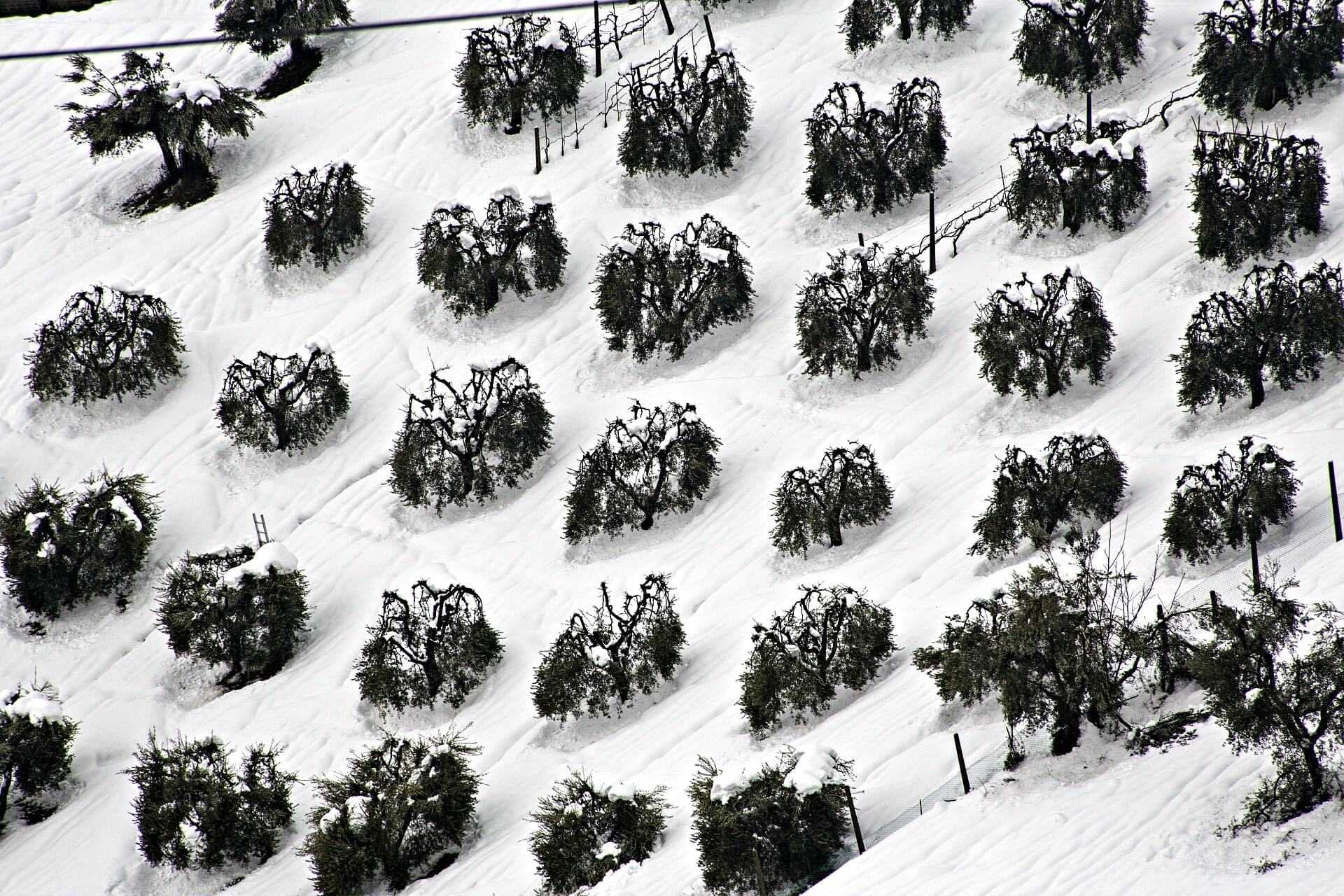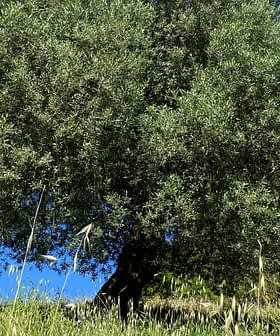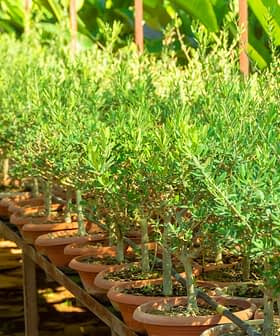In the last few days, several European countries were struck by an extraordinary wave of cold which lowered temperatures below freezing. Cities like Rome and Naples were blanketed in snow and, while authorities and civil protection were handling the special event with the necessary precautions, many took advantage of this to take a break and wage snowball fights in an unusual landscape.
Growers who had already pruned should beware, as the intense cold of the last few days was not that favorable to pruning wounds, especially in the case of reform operations.
The weather front also called the ‘Beast from the East,’ in Italy was dubbed ‘Burian,’ from the Russian word Buran (буран), which is the name of the glacial air flow originating in the region of Siberia that gave rise to the cold snap. Many see the extreme weather event as a consequence of climate change, but among meteorologists, most consider this as an ordinary contingency.

Photo by Giuseppe Palestini
“This wave of cold is part of a series of normal cyclic events which occur during winter,” said Massimiliano Morucci, an Italian meteorologist specialized in mid- to long-term Forecasts. “This kind of cold spells happen every 8 or 10 years, occasionally every 6 years. This time, the Burian hit Italy and other Central and Southern European countries more intensely than usual because it reached very low temperatures at the level of European Russia,” Morucci explained.
“In my opinion, we cannot define this particular event as a climate change consequence. In any case, we still cannot determine whether climate change is leading us to such an important meteorological variation.” In substance, what happened would have been caused by a colder flow, due to a normal Siberian depression which always occurs during this period but now went well beyond the classical latitudes.
Coldiretti, in a preliminary assessment of frost damages to agriculture in Italy, reported losses in crops such as lettuce, cabbage, chicory, broccoli, potato and artichoke, and indirect disruptions caused by traffic restrictions that hinder deliveries.

Photo by Giuseppe Biondino
Farmers are worried about fruit plants like apricot, cherry, peach and pear trees since in some areas buds already developed and these are particularly cold-sensitive. The fine weather of previous weeks had, in fact, stimulated vegetative growth in several regions and now prolonged temperatures below zero are seen has a threat for crops.
Early last year, Mediterranean countries were affected by a similar drop in temperature that first caused concern and then turned out to have beneficial effects on olive trees.
It is worth recalling that cold can affect the wood of olive tree if the minimum temperatures drop below ‑7°C (19.4°F) for 8 – 10 days, and serious harm can be caused to the canopy and trunk if they fall below ‑10/-12°C (14/10.4°F) in a few hours.
The hope is that, again this year, low temperatures can bring mainly benefits to the work of olive growers, helping them in reducing the olive fruit fly population and containing fungal diseases.
“This wave of bad weather does not seem to have damaged olive trees in our area,” observed Nicolangelo Marsicani, who produces an award-winning extra virgin olive oil in Sicilì, in the heart of the Cilento, Vallo di Diano and Alburni National Park. “Here olive trees were still in vegetative rest and low temperatures surely helped to contain the onset of pests.”
Buongiorno! Stamattina Roma si è svegliata così #nevearoma
Good morning! #Rome woke up like this today#IlikeItaly
📷 IG inrhrome pic.twitter.com/oFUofb5Jib— Italia (@Italia) February 26, 2018
There are many variables, but we can say that complications could arise if and where the vegetative growth of olive trees, before the winter rest, was already active. In this case, damages will soon be visible, as liquids like water and lymph can freeze if exposed to low temperatures for too long.
“Growers who had already pruned should beware, as the intense cold of the last few days was not that favorable to pruning wounds, especially in the case of reform operations,” our farmer added. “Anyway, we have to wait a few weeks to see if plants have been harmed.”
At the moment, some farmers reported injuries like branch breakages on young plants, which are delicate and unprepared to bear the weight of the snow, but also on more robust olive trees. Too much snow can, in fact, overburden the secondary branches and cause fractures, which, in addition to the immediate loss, could facilitate the penetration of olive knot bacteria in more susceptible varieties, Marsicani noted.
On the positive side, when it comes to snow, the expansion of water upon freezing turns out to be useful as it causes microcracks in the soil just like a natural tillage. Moreover, if frost lasts for several days, this will provide a good water reserve, extremely useful against summer heat.
Experts remind us that operations in the olive groves should be suspended until the ground and the vegetation will be dry again and ready to receive the appropriate practices.








